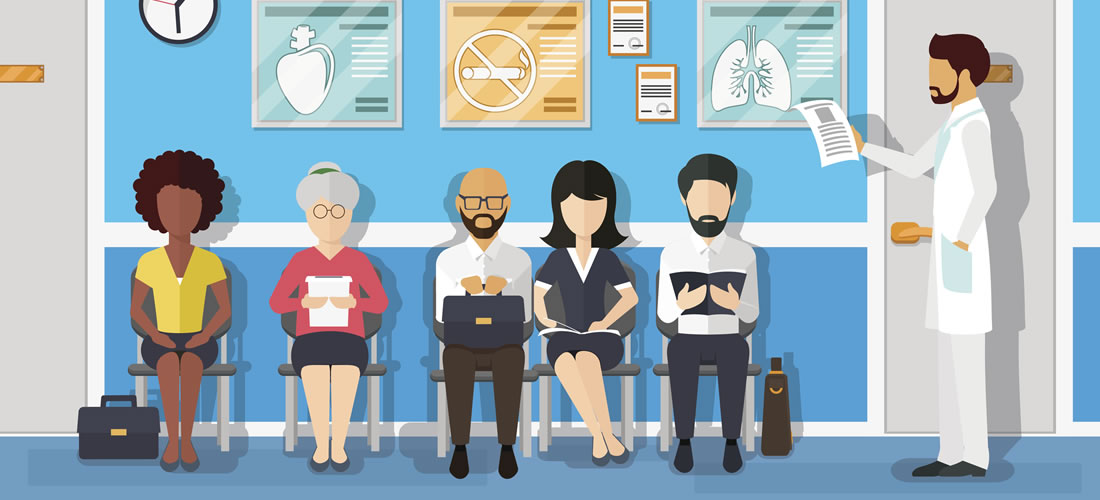Patient experience is a significant topic in the healthcare world. According to HealthLeaders Media, 84 percent of healthcare leaders rank patient experience among their top three priorities. And over the past decade, scores of research has been completed and published on the design and operations of healthcare settings to improve the patient experience. This onsite research has uncovered significant opportunities for improvement – such as private rooms and decentralized nursing stations. As a result, these types of investments have become important to health care systems across the country. And yet, so many systems still struggle to improve and drive consistency of the patient experience. Why?
Because it’s not just about the physical design. A 2015 study published in the Journal of Hospital Medicine, disproved the assumption that new and pleasing surroundings improve patient satisfaction scores with physicians, nurses, and overall care (Siddiqui, Zishan K., et al. “Changes in patient satisfaction related to hospital renovation: Experience with new clinical buildings” Journal of Hospital Medicine volume 10, issue 3).
It is a well-documented fact that overall patient satisfaction is most highly correlated to nursing and physician behaviors. The faster we stop explaining away poor scores because of old equipment or outdated nursing stations, and begin to dedicate efforts and funds to addressing the areas that will impact patients in the ways that matter most to them, the faster we can start to see real, sustainable improvement.
Your People Will Make or Break the Patient Experience
Let’s apply the same rigor we do to understanding our facilities and operations to our greatest asset – our people. After all, our facilities are not what helps our patients understand the next step in their care plan or builds a family’s confidence in caring for their loved one post-discharge. The hospital room does not provide the patient with empathy or emotional comfort, nor does it make them feel heard. Our people do that. If you’re offering a script to your people and consider this an adequate training initiative, you’re going to fall short. Alternatively, if you don’t provide any messaging guidance because you trust their abilities, you’re failing again! You need to help your people succeed by arming them with the information that makes a difference to the patient – not just “teaching to the test.”
Many of the best practices for driving patient experience are well established at a high altitude. And those practices have been eagerly implemented in systems across the country. The nursing station has been redesigned, hourly rounding has been put in place, EPIC is now “the way we do things.” But what are the behaviors and practices that make those things really succeed? How will your people translate a nursing station with better technology to a better patient experience?
The answers to these questions lie in taking an objective, rigorous look at how your people are delivering care today. The departments and people with the highest patient experience scores aren’t getting these top rankings because of luck. They are doing something different. And if your system isn’t digging to find out why, you are likely holding your organization back.
When you really study the everyday practices of your people, you’ll find that often the solutions will jump out at you. To do that effectively, you’ll need to:
- Use your metrics to identify those places where patients are already having a better, more consistent experience. Be objective!
- Spend time in those areas: follow staff, interview patients or families, talk to managers, take note of what’s on the walls and in the halls. Be sure to take good notes and leave your assumptions at the door. The critical differentiators are often nuances – if you aren’t paying close attention, you’ll miss them.
- Find a control group. Contrast what you’ve seen to a similar area that is functioning fine but isn’t a top performer. The answers often lie in the differences between high-performers and average ones.
Perfecting the Patient Experience in the Real World
Consider two recent examples I’ve encountered:
Root was recently asked to study in-patient units for a regional health system to determine the practices that differentiated those units with consistently high Press Ganey scores from the average units. After observing in the units and interviewing team members, one of the biggest differences that emerged was the strategy for call lights.
In the average unit, there was an ongoing, ever-frustrating battle, to answer call lights in less than two minutes. They tried all kinds of strategies to make it happen – from no-pass zones to new technologies – but ultimately the average-performing staff felt overwhelmed and disheartened. The high-performers took a slightly different approach. The leaders of these units had all been trained and focused on consistently reinforcing the learnings with the nursing staff to reduce the number of call lights by anticipating needs during rounds. Specifically, they checked for 6 things:
- Can an IV bag be changed now?
- Are cords and equipment properly in place?
- Does the patient need to use the restroom?
- Does the patient wish to be repositioned?
- Does the patient have enough to drink given their recommended fluid intake?
- Would the patient like a snack?
Hourly rounding is a proven best practice for reducing call lights. But by studying the best performers in patient experience, the organization gained new insight that 1) revealed the actual impact in their system and 2) provided the exact checks nurses should make during the rounding that they could then scale to other units.
Even softer skills can be scaled when you break them down into repeatable practices. A children’s hospital recently asked Root to help them understand why some of their units were receiving significantly higher patient scores on questionnaires administered to admitted patients versus the post-discharge scores. Through our research, which included observation and interviews, we were able to identify those practices that drive open, candid conversations with patient families and those that were skewing the responses and preventing families from expressing concerns prior to discharge.
There is no doubt that enhancing the patient experience is a top goal for most, if not all, healthcare organizations today. But hoping that new technology or larger rooms will give people a better impression about your facility is the wrong approach. Sure, outdated equipment is not an accelerator to delivering a better patient experience, but the real way to move the needle is by empowering your people.
You need to hone in on the subtle ways the highest performers are getting things done and then arm the rest of the organization with this knowledge. By helping your people make small changes in their everyday behaviors, you will be able to impact your patients in big ways.







